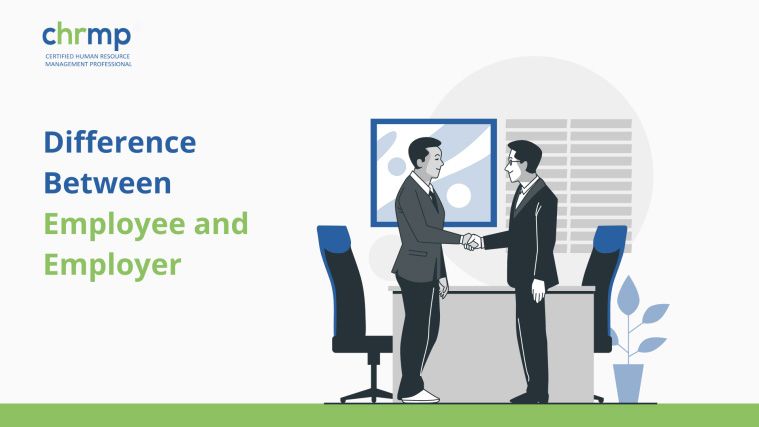

In the dynamic world of human resources, understanding the distinctions between “employee and employer” can significantly enhance how each navigates their roles within an organization. This blog will explore the “difference between employee and employer” by providing a clear definition and outlining their respective responsibilities, authority, legal obligations, and more. Whether you are looking to “define employees” or understand the full spectrum of “employee and employer meaning,” this guide offers valuable insights for both parties involved in this professional relationship.
While the terms “employee” and “employer” might be familiar, they encapsulate vastly different roles within any business or organization. An employer orchestrates the operational and strategic side, while employees are the workforce executing daily tasks that drive the business forward. Clarifying these roles not only aids in legal and operational efficiency but also fosters a positive, productive workplace culture.
So, whether you’re an employer aiming to refine management skills or an employee seeking clarity on your rights and responsibilities, this detailed guide on the “employee and employer difference” will be invaluable.
An essential “difference between employee and employer” lies in their core roles and responsibilities. Employees are hired to perform specific tasks in exchange for compensation. They follow directives and align their daily functions with the company’s objectives. Employers, on the other hand, manage operations and strategize business growth and employee management. They set goals, devise strategies to meet these goals, and ensure that business operations align with legal standards.
In terms of control and authority within the organization, there is a stark “employee and employer difference.” Employees have limited decision-making power and must adhere to the employer’s directives. In contrast, employers possess a significant degree of control, including the development of business strategies and making pivotal decisions that affect the trajectory of the business and its workforce.
When it comes to legal obligations, the “difference between employee and employer” becomes particularly evident. Employees must comply with workplace policies and fulfill their roles effectively. Conversely, employers are required to ensure a safe working environment, meet labor laws and regulations, and provide agreed-upon compensation and benefits. This clear delineation of legal responsibilities helps maintain a lawful and equitable working environment.
Another significant aspect is how compensation and benefits are structured. Employees receive salaries, wages, and benefits as fair exchange for their labor. These compensations are structured based on their roles, performance, and agreement with the employer. Employers manage and plan these compensation packages to maintain equity, motivate performance, and attract talent, showcasing a critical operational difference in the roles each plays.
The risk and liability aspect also underscores a significant “difference between employee and employer.” Employees generally face limited direct risk regarding the overall business decisions unless involved in decision-making processes. Employers, however, shoulder the primary risk, facing financial, legal, and operational repercussions of their decisions, highlighting the weight of their role within the company.
Investment and ownership are predominantly the realm of the employer. Employees invest their time and skills, but do not usually hold financial stakes or participate in overarching strategic decisions. Employers invest capital and resources, bear the risks of their investments, and reap the rewards or face the consequences of their business decisions.
Career advancement opportunities also differ significantly. Employees typically have clear pathways for promotion and role enhancement based on performance and qualifications. Employers, while at the apex of their organizational structure, seek growth through business expansion and strategic innovations rather than through traditional career ladders.
Work schedules and flexibility further illustrate the “difference between employee and employer.” Employees generally work according to schedules set by employers, who have the flexibility to design business operations. While some employers offer flexible working conditions to enhance retention and job satisfaction, the ultimate control lies with them.
Finally, the overall responsibility within the company varies dramatically. Employees focus on their assigned duties and contributing to team goals. Employers, however, bear the overarching responsibility for the business’s health, strategic direction, and compliance with laws, showcasing a broad scope of influence and accountability.
The relationship between an employee and an employer is fundamentally contractual, where the employee agrees to perform designated tasks in return for compensation. This dynamic, pivotal in defining the “employee and employer meaning,” is built on mutual respect and trust, establishing each party’s rights and obligations.
Employers have critical responsibilities, including providing a safe and healthy work environment and ensuring that “human resource employees” receive fair compensation and are treated equitably. They are also tasked with setting performance standards, managing resources, and steering strategic decisions that impact the organization at large.
On the flip side, employees are expected to perform their duties diligently, adhere to “employees definition” by fulfilling their role-specific tasks, and comply with organizational policies and regulations. They are entitled to just compensation, a secure working environment, and safeguards against discrimination and harassment.
This interplay between “employee and employer” significantly influences both the organization’s success and the well-being of its workforce. Key to nurturing a positive employer-employee relationship are effective communication and a joint commitment to the organization’s objectives, enhancing productivity and job satisfaction across the board.
Despite the clear “difference between employee and employer,” both share a common goal: the success of the organization. “The employee” contributes through their specific tasks and adherence to their job role, while the employer orchestrates the overarching strategic direction to ensure the company meets its targets. This shared aim fosters a symbiotic relationship that propels the organization forward.
Effective collaboration and transparent communication are the cornerstones of a strong “employee employer” relationship. Employees depend on open communication to grasp expectations and seek necessary feedback, aligning with the “define employees” guideline of understanding their roles and contributions clearly.
Employers, meanwhile, are encouraged to cultivate an environment where employees feel valued and heard, allowing them to express ideas and concerns freely. Such an environment not only enhances individual and collective performance but also leverages diverse insights for better decision-making and innovation within the company.
Frequently Asked Questions
Conclusion
Understanding the “difference between employee and employer” is crucial for anyone in the workforce. This guide aims to clarify “employee and employer differences” to foster a better working environment and enhance both parties’ effectiveness and satisfaction. Employees and employers must comprehend their roles, responsibilities, and the dynamics that define their relationship to navigate the workplace landscape successfully.
We invite you to share your thoughts and experiences on the distinctions between employees and employers. How do these differences play out in your workplace? Leave a comment below and join the discussion!

© 2007-2025 CHRMP| All Rights Reserved | Powered by Ripples Learning & Research Private Limited
